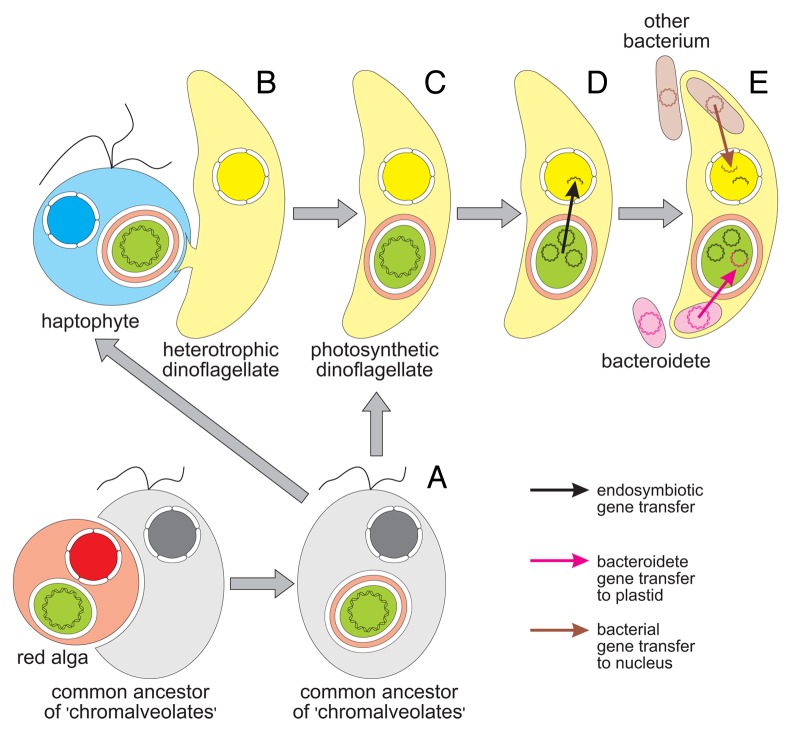Figure 1. Evolution of the peridinin plastid in dinoflagellates and bacterial gene transfers to the dinoflagellate plastid and nuclear genomes. (A) The origin of the peridinin plastid is usually explained in the framework of the chromalveolate hypothesis, which assumes that all chromalveolates (including haptophytes and dinoflagellates) inherited plastids from their common ancestor, which contained a red alga-derived secondary plastid. (B) However, it seems more probable that this plastid was acquired by a heterotrophic dinoflagellate from a haptophyte via tertiary endosymbiosis. (C) During the initial stages of tertiary endosymbiosis, the plastid lost redundant membranes and was finally transformed into the three-membrane state; the ancestral genome of the peridinin plastid initially consisted of typical plastid chromosomes. (D) These chromosomes disintegrated and were reduced to small plasmid-like minicircles. The plastid genome was also subjected to massive escape of its genes to the nuclear genome via endosymbiotic gene transfer. (E) Recent analysis of minicircles in Ceratium and Pyrocystis uncovered a process opposite to EGT in which the plastid genome gained the ycf16, ycf24, rpl28 and rpl33 genes and an open reading frame homologous to ftsY from bacteria related to the Bacteroidetes. The nuclear genome was also enriched with foreign genes from bacteria belonging to distinct groups; these bacteria may have been retained as endosymbionts, acquired as prey, or invaded the host cell as parasites.

An official website of the United States government
Here's how you know
Official websites use .gov
A
.gov website belongs to an official
government organization in the United States.
Secure .gov websites use HTTPS
A lock (
) or https:// means you've safely
connected to the .gov website. Share sensitive
information only on official, secure websites.
